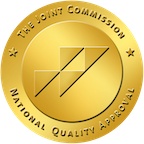Skip To Rehab Listing
That is the reason the Loogootee area has 25 alcohol and drug rehab centers accessible to local residents who struggle with addiction. These facilities serve the region's population of 8,150 regardless of age or situations in order to make effective treatment accessible to anyone who is looking for it.
Alcohol and Drug Rehab Program Settings and Approaches
Loogootee area residents who face alcohol and drug abuse problems can choose from a variety of treatment settings based upon factors such as their location and individual needs.
Recovery settings may consist of the following: outpatient individual counseling, detox programs, inpatient drug and alcohol rehab centers, long term drug and alcohol rehab centers, short term drug and alcohol rehab programs.
Clients can also choose from many recovery methods designed to offer effective support for their needs: substance abuse counseling approach, dual diagnosis drug rehab, group therapy, dialectical behavior therapy, trauma therapy, relapse prevention.
Specialized Services for Addiction Recovery
Drug and alcohol addiction is not the same for everyone, so treatment should also be individualized. That is why alcohol and drug rehabs in the Loogootee area offer various special services designed to provide a customized approach to recovery for patients. These special programs include the following: co-occurring mental and substance abuse disorders, housing services, clients referred from the court/judicial system, active duty military, treatment for spanish-speaking clients, social skills development.
Recovery Payment Options
Clients sometimes avoid treatment because of worries about finances. However, alcohol and drug rehab centers make a variety of financing alternatives available to clients in order to help with their financial considerations and maximize opportunities for treatment. Some of these options are included here: private insurance, cash or self-payment, military insurance, sliding fee scale, other state funds, county or local government funds.
Drug and alcohol recovery is available for Loogootee, IN. residents through a great deal of different programs, approaches, and financing options that put sustained recovery within reach.
Commonly Asked Questions about Addiction and Treatment
How to protect children in a substance abusing family?
"Protecting children in a substance-abusing family can be a significant challenge. Here are several steps that can be taken to ensure the safety and well-being of children in such circumstances:
Recognize the Problem: The first step in protecting children is acknowledging the issue. Denying the existence of substance abuse can lead to further harm.
Prioritize Child's Safety: If the substance abuse is causing dangerous situations, the child's safety must come first. This might mean making difficult decisions, such as temporary separation from the substance-abusing family member.
Seek Professional Help: Reach out to professionals who can guide you through this situation. Social workers, psychologists, and addiction specialists can provide valuable assistance and resources.
Encourage and Support Treatment: If the person with the addiction is willing, encourage them to seek professional help. Therapy, rehab, and support groups can all be beneficial.
Educate the Child: Age-appropriate education about drug and alcohol abuse can be helpful. This can help them understand it's not their fault and that the substance abuse is a disease.
Provide a Stable Environment: Create an environment that provides as much stability and routine as possible. This can help the child feel more secure amidst the chaos that substance abuse can bring.
Offer Emotional Support: Make sure the child knows they can express their feelings and fears to you. Validating their feelings and offering comfort is crucial.
Seek Support for the Child: Counseling or support groups specifically for children of substance abusers can provide them with tools to cope.
Report Neglect or Abuse: If the substance abuse leads to neglect or abuse, it must be reported to local child protective services. This can be a painful step, but it's necessary to ensure the child's safety.
Encourage Healthy Coping Mechanisms: Teach the child healthy ways to handle their emotions, such as through art, music, journaling, sports, or talking about their feelings.
What areas of the body are most effected by long term drug abuse?
Long-term drug abuse can have significant impacts on various systems and organs within the body. The specific effects can vary depending on the type of drug used, but here are some general areas that can be affected:
Brain: Drug abuse can change the brain's structure and function, leading to alterations in behavior, judgment, memory, decision-making, and even mental health. Chronic use can lead to neurological disorders and cognitive decline.
Heart: Many drugs put a significant strain on the cardiovascular system, leading to a range of heart-related issues. These can include increased heart rate, high blood pressure, damaged heart muscle, irregular heartbeat, and an increased risk of heart attack and stroke.
Liver: The liver plays a key role in metabolizing substances, including drugs. Chronic drug use can lead to a variety of liver conditions, such as hepatitis, cirrhosis, and liver failure.
Lungs: Drugs that are smoked or inhaled can cause serious lung damage. This can lead to chronic bronchitis, emphysema, lung cancer, and other respiratory diseases. Opioids can also slow breathing, potentially leading to hypoxia, a condition where not enough oxygen reaches the brain.
Kidneys: Certain drugs can lead to kidney damage and disease, including kidney failure. This can be caused by increased body temperature, breakdown of muscle tissue that clogs the kidneys, and direct kidney toxicity from the drugs themselves.
Digestive System: Drug use can also affect the digestive system, leading to nausea, vomiting, abdominal pain, and changes in appetite and metabolism. Some drugs can also cause significant damage to the stomach and intestines.
Skin: Certain drugs can also affect the skin, leading to conditions like acne, skin infections, or skin picking resulting in sores. Intravenous drug use can lead to collapsed veins and infections of the blood vessels and heart valves.
Immune System: Some drugs can weaken the immune system, making users more susceptible to infections, diseases, and certain types of cancer.
It's important to note that the specific health effects of drug abuse can vary depending on the individual, the drug(s) used, the frequency and duration of use, and other factors. Seeking professional help and treatment is crucial for mitigating the negative health consequences of drug abuse.
Facts about fentanyl
Fentanyl is a powerful synthetic opioid analgesic that has garnered significant attention in recent years due to its role in the opioid crisis. Here are some essential facts about fentanyl:
Potency: Fentanyl is estimated to be 50 to 100 times more potent than morphine and 25 to 50 times more potent than heroin. Due to its high potency, it is prescribed in micrograms (mcg) rather than the milligrams (mg) typically used for other opioids.
Medical use: Fentanyl is primarily used in medical settings to manage severe pain, such as chronic pain or breakthrough pain in cancer patients. It is also used as an anesthetic during surgical procedures. Fentanyl is available in various forms, including transdermal patches, lozenges, tablets, and injections.
Illicit use: Fentanyl has become a significant concern in the illicit drug market due to its potency and relatively low production cost. Illegal fentanyl is often mixed with other drugs, such as heroin, cocaine, or counterfeit prescription pills, increasing the risk of overdose for unsuspecting users.
Overdose risk: Fentanyl's potency makes it particularly dangerous, as even a small amount can cause an overdose. Signs of fentanyl overdose include slow or shallow breathing, unresponsiveness, pinpoint pupils, cold and clammy skin, and loss of consciousness. Fentanyl overdoses can be fatal if not promptly treated.
Naloxone: Naloxone, also known as Narcan, is an opioid antagonist that can rapidly reverse the effects of a fentanyl overdose by displacing the drug from the opioid receptors in the brain. Due to fentanyl's potency, multiple doses of naloxone may be necessary to reverse an overdose effectively.
Fentanyl analogs: There are numerous fentanyl analogs or derivatives, such as carfentanil, acetylfentanyl, and furanylfentanyl. These analogs can have varying potencies, often significantly stronger than fentanyl itself, which can further increase the risk of overdose and fatalities.
Legal classification: Fentanyl is a Schedule II controlled substance in the United States, indicating that it has a high potential for abuse and dependence but also has accepted medical uses. Illicit fentanyl and its analogs are often classified as Schedule I substances, indicating that they have no accepted medical use and a high potential for abuse.
Addiction and dependence: Fentanyl, like other opioids, carries a risk of addiction and physical dependence. Chronic use can lead to tolerance, requiring higher doses to achieve the same effect, and withdrawal symptoms if usage is reduced or stopped abruptly.













